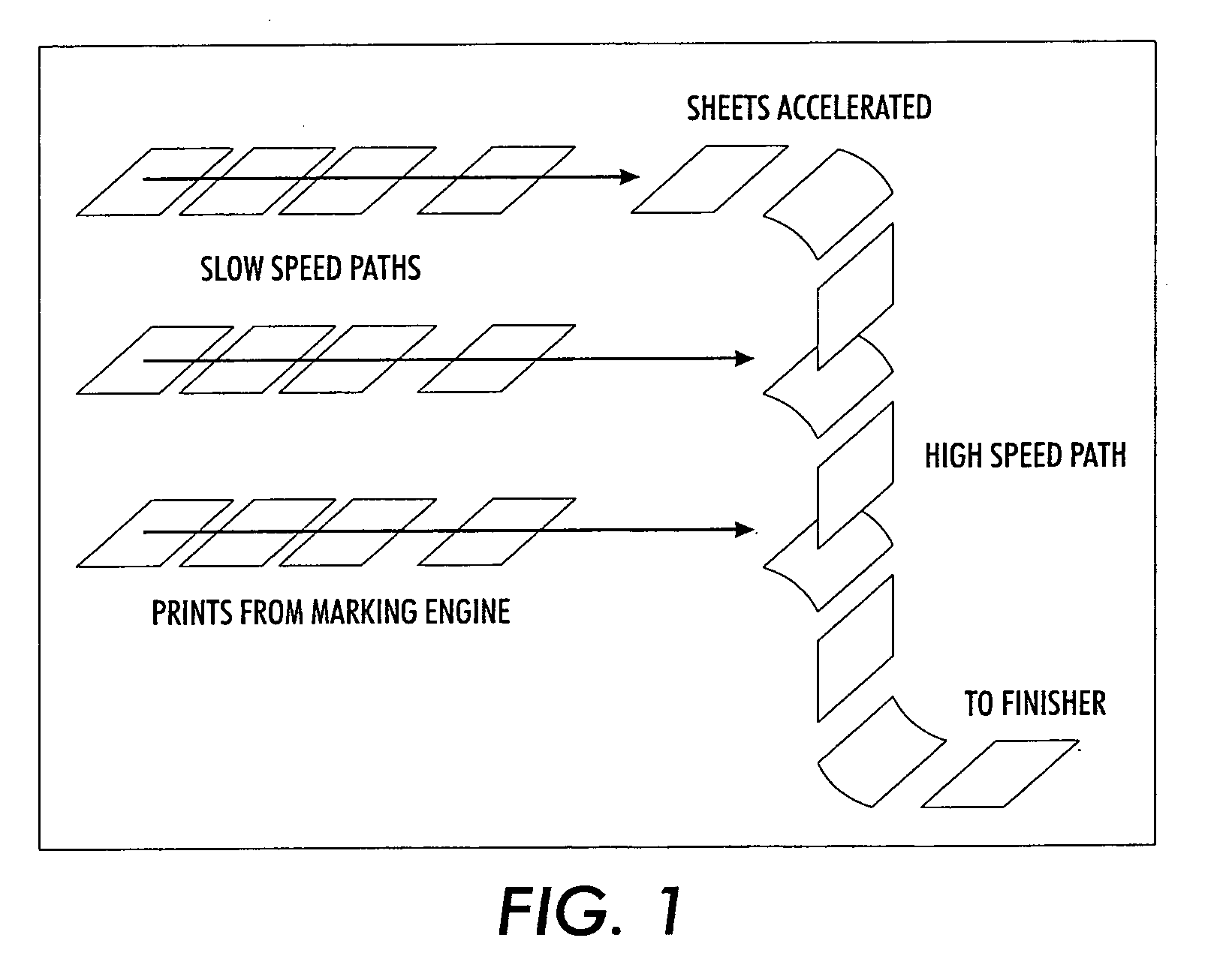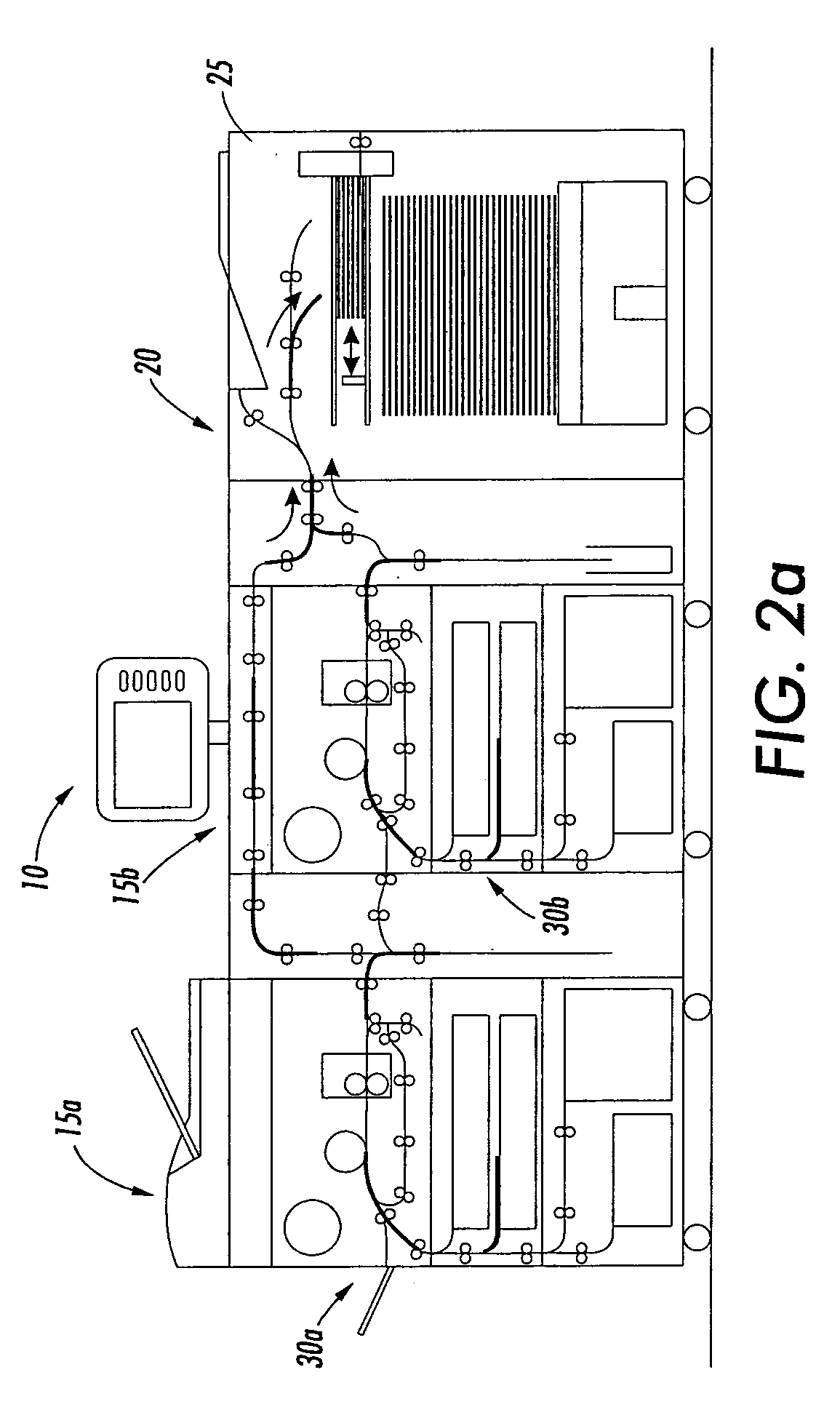High print rate merging and finishing system for parallel printing
a technology of parallel printing and merging system, applied in the field of image production, can solve the problems of multiple marking engines, multiple finishing systems, and dedicated media paths between them, and achieve the effect of merging the output of multiple marking engines and reducing the number of finishing systems
- Summary
- Abstract
- Description
- Claims
- Application Information
AI Technical Summary
Benefits of technology
Problems solved by technology
Method used
Image
Examples
Embodiment Construction
)
[0019]FIGS. 2a and 2b illustrate systems incorporating features of the disclosed embodiments. Although the disclosed embodiments will be described with reference to the embodiment shown in the drawings, it should be understood that the disclosed embodiments can be embodied in many alternate forms of embodiments. In addition, any suitable size, shape or type of elements or materials could be used.
[0020]As shown in FIG. 2a, a system 10 is generally a printing system that includes at least two marking systems 15a, 15b and a finishing system 20. A media path is provided such that the sheets printed by the two marking systems 15a, 15b can be merged, one on top of the other, at some point before delivery to the compiling station 25 of the finishing system 20. It should be appreciated that this merging function could take place in the media path upstream of the finisher, as shown in FIG. 2a, or in the media path of the finishing system. In the embodiment shown in FIG. 2a, the two marking ...
PUM
 Login to View More
Login to View More Abstract
Description
Claims
Application Information
 Login to View More
Login to View More - R&D
- Intellectual Property
- Life Sciences
- Materials
- Tech Scout
- Unparalleled Data Quality
- Higher Quality Content
- 60% Fewer Hallucinations
Browse by: Latest US Patents, China's latest patents, Technical Efficacy Thesaurus, Application Domain, Technology Topic, Popular Technical Reports.
© 2025 PatSnap. All rights reserved.Legal|Privacy policy|Modern Slavery Act Transparency Statement|Sitemap|About US| Contact US: help@patsnap.com



